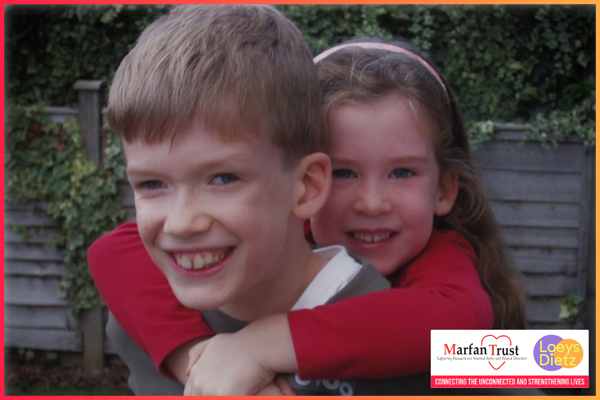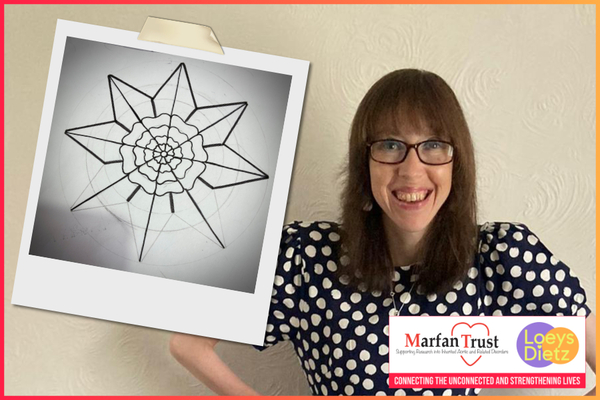Sent to a school for the partially-sighted, Val spent her childhood and young adult life living unknowingly with Marfan syndrome. When her children replicated her symptoms of short sight, suspicions were aroused and Marfan diagnosed. But, in the intervening years, behind the scenes, research had continued apace and the lens implantation technique made possible. Val hasn’t looked back.
Written by Val Greatorex
“… research is moving along at a rapid pace and my grandchildren’s future looks much brighter than mine ever did, due to research and the dedication of those devoted to improving the lives of people with Marfan syndrome.”
I want to tell you about my Marfan journey, which involves three generations of my family. My three sons and five grandchildren all inherited the Marfan gene from me and all of us have serious eye problems.
My problem was first noticed when I started school at five years old, and my teacher told my mother I was unable to see the blackboard and referred her to the eye clinic. I was then sent to a special school for partially sighted children, and over the years my lenses slowly became displaced until at the age of thirty they dislocated. I managed with heavy eye glasses until it became possible, through research, to implant lenses in the Marfan eyes. I haven’t looked back since.
As a toddler, my eldest son was nagged for sitting too close to the TV screen, for knocking things over and falling so much. By five years, his school teacher noticed he could not see the board and again we were referred to the eye clinic.
At his first clinic appointment, I was asked to bring along his three-year-old brother, and was told both sons had my condition. This was very traumatic, and I asked to be referred to Moorfields Eye Hospital, where the diagnosis of Marfan syndrome was made, and a geneticist explained the full story. It was hard for many years to live with guilt since I had passed on the condition to them.
Five years later, along came another boy for a delighted football-loving husband. It was obvious before the age of three that this son had also inherited the gene.
The school years were hard, because the boys were clumsy at sport, and broke their glasses regularly. However, all three boys were football mad, and enjoyed plane spotting with their monoculars provided by Moorfields Eye Hospital. The youngest one was fitted with scleral lenses, another breakthrough in the care of Marfan eyes.
Despite bullying at school and humiliation in sports, all three boys graduated, were offered jobs, and passed their driving tests after lens replacement surgery. They can now cope with mild correction eye glasses or none at all.
Of the five grandchildren, three have inherited the gene, and despite this are lively and happy. They have all worn eyeglasses from two-and-a-half years old and the ten-year-old is trying contact lenses. Future surgery has been discussed. My own feelings were difficult to handle at first. But I know research is moving along at a rapid pace and their future looks much brighter than mine ever did, due to research and the dedication of those devoted to improving the lives of people with Marfan syndrome.
Throughout our journey, we have been helped over the years with information and guidance whenever it was needed from the Marfan Association when it existed, and, in later years, Marfan Trust. Their research has also discovered the cause of our condition and they are now working on medication to prevent the worst manifestations.
Please note that the views expressed in this article are those of its author. The Marfan Trust is not responsible for the medical content of comments posted by others on these blog pages. If you have specific medical queries, please email i[email protected]









